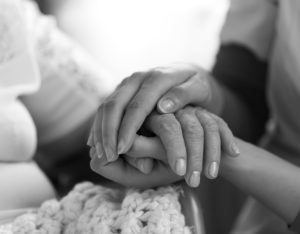
The average American retires at the age of 63, according to the U.S. Census Bureau. However, the Social Security Administration (SSA) says the full retirement age is between 65 and 67. Regardless of your age, you can retire whenever you want—what matters is how you prepare for your retirement.
You need a relaxing retirement that allows you to enjoy a day out on the boat, take a vacation, or enjoy the fruits of your investments. While retirement planning, it’s important to understand how much money you’ll need, make sound investment decisions, and identify your priorities. You should also start planning early—at least 2 to 5 years before your retirement, depending on your financial situation.
Settle Your Debts
Retirement means you’re starting a new life, and you shouldn’t do it with a lingering debt. Having debts will deny you the financially sound life you want after retirement. You should, therefore, strive to pay off your debts while still working.
While it’s tempting to pay off your debt using an IRA, you shouldn’t do it. It’s essentially stealing from yourself, plus it comes with taxes and penalties, costing you even more. As such, you should focus on paying off your car payments, mortgage, or student loans with your income and return on investments.
Many people stop using credit cards after retirement. This prevents you from overspending by accident. The sooner you clear your debts, the easier it will be to make your retirement plans.
Plan for Medical Coverage
Health care needs are very unpredictable. Plus, as we age, we tend to be more vulnerable to different health conditions. As such, it’s vital to plan for medical coverage after retirement since your employer’s health benefits will stop.
As a retiree, you’ll automatically qualify for Medicare if you meet all the requirements. Still, you can apply for Medicaid for dual coverage. Medicare has four parts: A, B, C, and D. The federal government funds parts A and B, while parts C and D are provided by Medicare-approved private insurance companies.
Part C combines Parts A and B into a single plan, allowing you to get the benefits of both plans. It is also the most popular route for retirees. Be sure to find more information on Medicare Part C here to learn more about its benefits and features.
While Medicaid is designed for people with limited income and resources, it also covers those aged 65 and above. You must be a resident of the state in which you live to qualify for Medicaid. Your income should also be less than $2,382 per month.
Explore Downsizing
Moving into a smaller and cheaper home is always a wise decision for retirees. It will reduce your mortgage payments, home insurance, and property taxes. This will give you a greater quality of life with the money you have.
However, if your house is paid off, downsizing may not be worth it. You can still keep the home but take into account maintenance costs. Or, you can still sell it and buy a summer home as an investment option.
Save Funds
The best time to start saving for retirement is now, and try to save as much as you can. You can consider different retirement accounts, including Solo 401(k), Roth IRA., 457, IRA, and a 401(k).
Most employers offer 401(k) retirement plans, allowing you to start saving as early as possible. Still, you can sign up for the plan at any time—not just when you get employed. You should have backup funds in case of emergency or delay Social Security benefits, increasing your monthly benefit.
Find Other Opportunities
Retirement doesn’t mean you can no longer work. In fact, it allows you to explore your passions. Finding volunteer opportunities or part-time work allows you to stay active and enjoy your retirement. For example, you can teach at local education institutions or give tours of your town or city.
You should also join social groups or community organizations to stay connected. This is particularly important if you relocate to another area after retirement. Maintaining a good social life can help keep you lively and motivated.
Take the Time to Prepare for Retirement
Retirement is bound to come at some point. That means your monthly paycheck comes to an end, but your financial responsibilities don’t end there. You have bills, probably a mortgage, and other miscellaneous expenses. Start retirement planning as early as possible and help make the transition seamless.








